Other news

Case Study - GYEONGGISat-1: Enabling Climate Intelligence From Space
Read more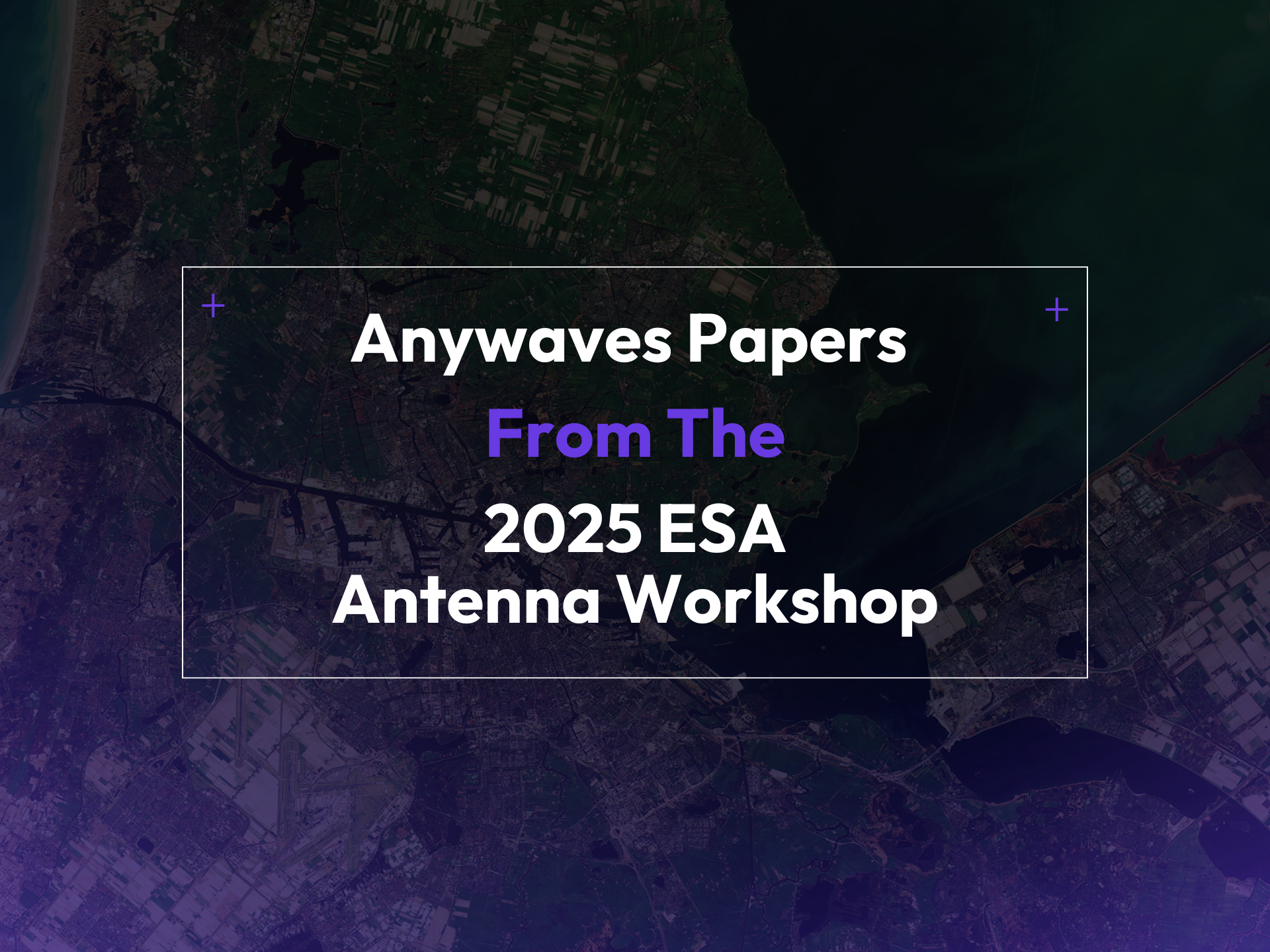
2025 ESA Antenna Workshop: Ka-Band TT&C and X-Band Active Antenna Breakthroughs
Read more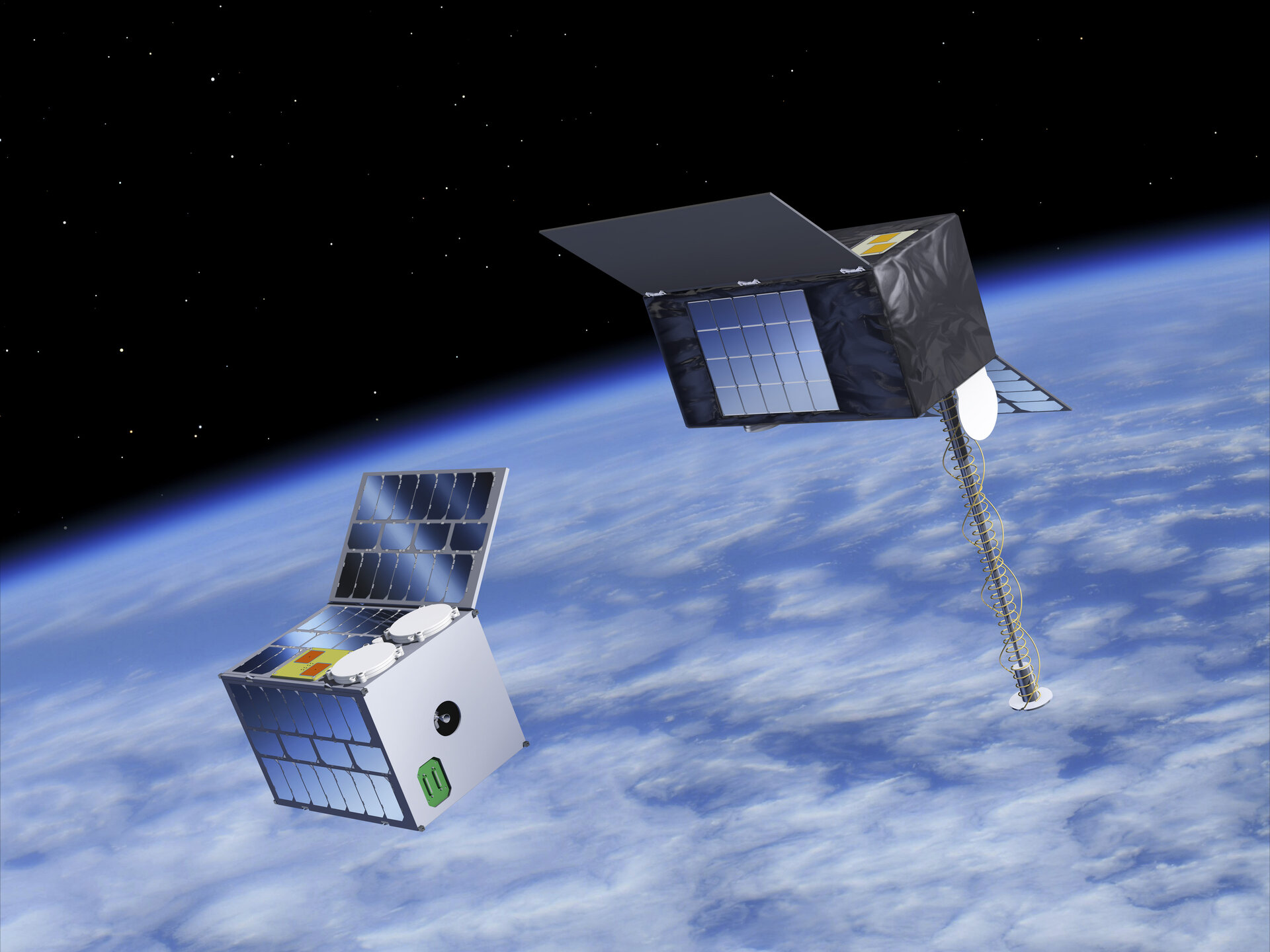
In space, success is always a collective effort. No mission is built by one team alone — and no single subsystem makes a satellite work. It is the sum of many specialities, many talents, and many trusted partnerships.
At Anywaves, we design antennas — usually small components but essential for ensuring that satellites can communicate with Earth. And when those antennas are part of meaningful missions, carried by bold and capable partners, we take real pride in our work.
That’s what makes our partnership with Nara Space Technologies so valuable.
Based in South Korea, Nara Space is one of the most dynamic players in the small satellite landscape. Their vision — to deliver high-resolution Earth imagery and space science through scalable CubeSat missions — aligns with the new era of space: agile, intelligent, and increasingly collaborative. Working together on the Observer constellation and the K-RadCube scientific mission has allowed us to contribute in our area of expertise, while supporting a broader and inspiring effort.
From low Earth orbit to lunar trajectories, this partnership is a story of engineering excellence, mutual respect, and shared ambition — with each company playing its part.

Anywaves Sales Team visiting Nara Space Facilities in Korea.
©Nara Space. From left to right: PhD Michele Del Mastro (Technical Sales Manager – Anywaves) ; Anne-Lise Vo Thanh (Sales Manager – Anywaves) ; Alexandra Jercaianu (Senior International Business Sales Manager – Nara Space) ; François Morizur (CCO – Anywaves) ; Jungkyu Lee (CCO – Nara Space)
To understand the scope and significance of these missions, it’s important to recognize the achievements of our partner.
Founded in 2015 in Seoul, South Korea, Nara Space Technologies has quickly become a leader in small satellite innovation. With over 60 engineers and specialists, the company develops complete micro- and nano-satellite platforms, focusing on:
The company made history with Observer-1A, becoming the first private Korean company to successfully launch and operate a 16U optical CubeSat, a major milestone in Korea’s commercial space trajectory.
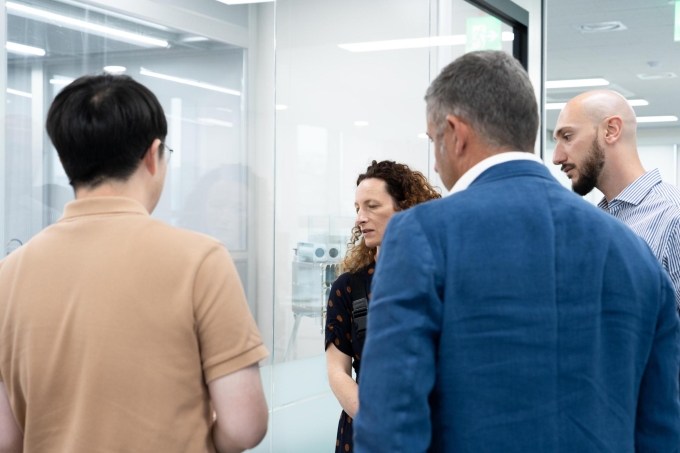
Anywaves Sales Team visiting Nara Space Facilities in Korea.
©Nara Space. From left to right: Jungkyu Lee (CCO – Nara Space) ; Anne-Lise Vo Thanh (Sales Manager – Anywaves) ; François Morizur (CCO – Anywaves) ; PhD Michele Del Mastro (Technical Sales Manager – Anywaves)
The Observer program is designed to deliver fast, flexible, and frequent imaging of the Earth — enabling governments, researchers, and commercial users to respond to environmental and strategic challenges in near-real time.
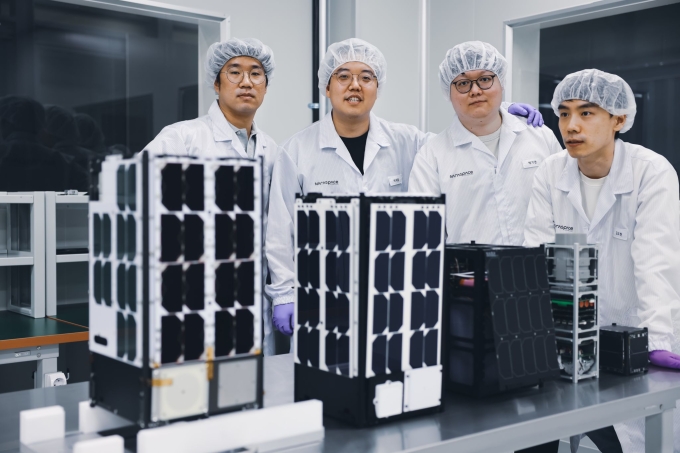
The Team behind Observer-1. Credits: Nara Space
The first satellite in the series, Observer-1A, launched on 11 November 2023 aboard a SpaceX Falcon 9 as part of the Transporter-9 rideshare in cooperation with Exolaunch.
Technical highlights include:
All captured imagery is delivered through EarthPaper, enabling near-real-time data access, machine learning-driven analytics, and seamless API integration for customers.
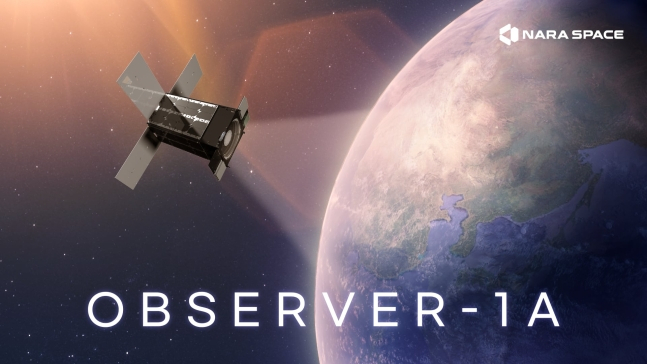
Credits: Nara Space
Set to launch in late-2025, Observer-1B replicates the platform and payload of 1A, enhancing revisit capabilities and constellation redundancy. It lays the foundation for Nara Space’s ambition to scale to over five years.
To support the large volumes of data generated by Observer’s high-resolution imaging system, we provided a compact, high-performance X-band antenna tailored for CubeSats. Designed to be robust and reliable under orbital conditions, the antenna offers:
While our antenna is just one of many critical subsystems onboard, we’re proud it helps ensure the mission’s valuable data can be transmitted back to Earth effectively.
“We used the X-band antenna from Anywaves for our Observer-1A. We are satisfied with the performance and it works better than expectation on orbit. We are going to have stronger collaboration with Anywaves in the near future.”
— Jungkyu Lee CCO, Nara Space
➜ More on Anywaves X-Band Antennas

Observer-1 SpaceCraft. ©Nara Space
While Observer-1 focuses on looking down at Earth, K-RadCube looks outward — and inward — to explore the harsh realities of deep space. Developed jointly by Nara Space Technologies and the Korea Astronomy and Space Science Institute (KASI), this 12U CubeSat is set to fly aboard NASA’s Artemis II in 2026.
Artemis II mission will be the first crewed lunar orbital flight in over 50 years and K-RadCube will investigate the effects of cosmic radiation on spacecraft components and biological analogs.
Mission Details
This is the first Korean satellite to fly on a U.S. crewed mission vehicle — a landmark achievement for the Korean space community and a symbol of deepening international cooperation.
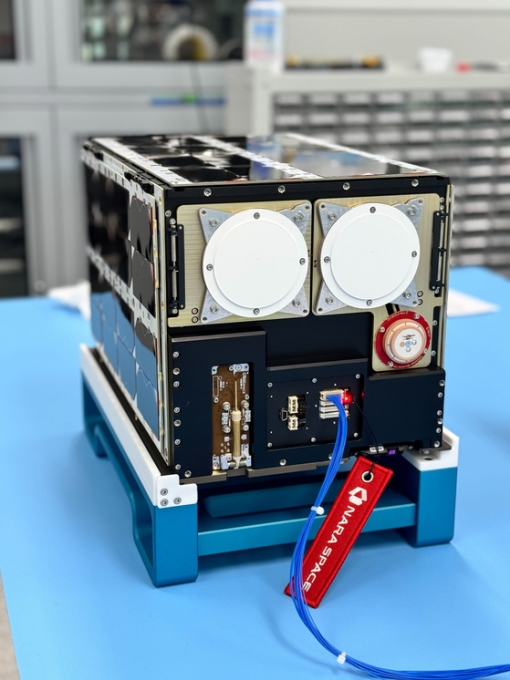
Korea’s K-RadCube to measure cosmic radiation aboard NASA’s Artemis 2 mission. © Nara Space
For this demanding environment, we supplied two S-band antennas to support telemetry and telecommand operations. These antennas are designed to offer:
“Anywaves’ antennas are widely recognized for their outstanding performance in the S-band, consistently setting a high standard in the industry for HPBW and gain. Their robust structural design ensures durability, even in extreme temperatures from -120°C to +120°C. What truly sets them apart is their fast, well-documented customer support system — from clear user manuals to responsive Q&A and fast lead times. We’ve had a great experience integrating their antennas into our missions.”
— Jungkyu Lee CCO, Nara Space
K-RadCube will mark the first Korean CubeSat aboard a NASA crewed launch, symbolizing a leap in technical confidence and international cooperation between South Korea, the U.S., and Europe.
➜ More on Anywaves S-Band Antennas

Anywaves Sales Team visiting Nara Space Facilities in Korea.
©Nara Space. From left to right: François Morizur (CCO – Anywaves) ; Anne-Lise Vo Thanh (Sales Manager – Anywaves) ; Jungkyu Lee (CCO – Nara Space)
This collaboration illustrates what’s possible when expertise is shared and ambitions are aligned. It brings together:
And while Anywaves contributes only one layer — the RF link — we understand its importance in enabling communication between the spacecraft and ground, unlocking the value of the entire mission.
At Anywaves, our mission is focused: we build antennas for space. They are small, often invisible from the outside, but essential to ensuring satellites can communicate — so that their data, their insight, and their impact reach the ground.
Working with Nara Space Technologies has shown us what’s possible when our technology is integrated into a broader mission designed with vision and excellence. Whether it’s Observer-1A, sending back stunning imagery of Earth, or K-RadCube, probing the radiation belts at the edge of deep space, we are proud to support these achievements.
We know we are only one part of the system — but we take that role seriously.
And as Nara Space continues to grow as a leading force in the Korean and global space landscape, we are honored to continue this partnership, building high-performance links between orbit and Earth, and contributing to missions that matter.
From Toulouse to Seoul and from CubeSats to crewed spaceflight, we are committed to supporting our partners with expertise, precision, and rigor.
Learn More



If you have any question, we would be happy to help you out.